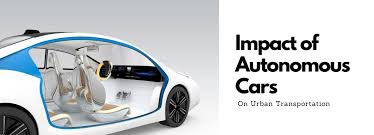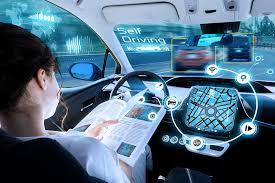
For over a century, cities have been designed around human drivers—roads, traffic lights, gas stations, and parking lots all exist because people sit behind the wheel. But that era is nearing its end. In 2025, self-driving cars are moving from science fiction to everyday reality, and their rise is set to transform urban life in profound ways.
These autonomous vehicles (AVs) won’t just change how we commute—they’ll change how cities breathe, grow, and connect. As steering wheels vanish, so too will some of the problems that have long plagued modern urban living.
So, how exactly will self-driving cars reshape the cities of tomorrow? Let’s take a closer look.
1. Reclaiming Space: Fewer Parking Lots, More Parks
Did you know that in many cities, up to 30% of downtown land is devoted to parking? With self-driving cars, much of that space could be freed.
Here’s why:
- AVs can drop passengers off and then self-park in compact, off-site lots, often stacking themselves with extreme efficiency.
- Shared autonomous fleets mean fewer cars overall, reducing the need for private parking entirely.
As a result, cities could convert sprawling parking lots and garages into:
- Parks and green spaces
- Pedestrian plazas
- Housing developments
- Bike lanes and recreation areas
The urban landscape could finally prioritize people over parking.
2. Smoother Traffic, Safer Roads
Human error causes over 90% of road accidents. With self-driving cars, that risk plummets.
In 2025, many AVs already:
- Maintain perfect following distance
- Obey traffic laws flawlessly
- Communicate with other vehicles to avoid collisions
- Operate with near-zero distraction or fatigue
This shift leads to:
- Fewer crashes and traffic fatalities
- More efficient traffic flow, especially during peak hours
- Reduced road rage and unpredictable driving behavior
Cities may no longer need as many traffic lights or wide intersections, leading to calmer, more walkable streets.
3. The End of Car Ownership?
The rise of autonomous ride-hailing services is making personal car ownership less appealing—especially in cities.
Why own a car when:
- A driverless vehicle can pick you up in minutes?
- You avoid parking, maintenance, and insurance costs?
- You can summon different vehicle types for different needs?
This shift from ownership to on-demand mobility could radically reduce the number of cars on city streets—leading to cleaner air, quieter roads, and more space for everyone.
4. Inclusive Transportation for All
One of the most promising aspects of AVs is accessibility. Self-driving cars could offer independence to people who can’t drive—including the elderly, visually impaired, or those with disabilities.
In the near future, we may see:
- Wheelchair-accessible autonomous shuttles
- Voice-controlled ride services for the visually impaired
- Smart navigation for users with cognitive challenges
With fewer barriers to mobility, cities could become more inclusive and equitable places to live and work.
5. Cleaner, Greener Urban Environments
Most self-driving cars are also electric vehicles (EVs)—and that’s a game-changer for the environment.
The combination of EVs + AVs means:
- Fewer tailpipe emissions
- Reduced noise pollution
- Optimized driving patterns that lower energy use and traffic congestion
Cities could see a significant drop in urban air pollution, leading to better public health and more sustainable living environments.
6. Redefining Public Transit and City Planning
Self-driving technology doesn’t just affect private cars—it’s also reshaping public transit.
In 2025, pilot programs are already testing:
- Autonomous buses and minibuses on fixed routes
- Driverless trams and shuttles connecting urban hubs
- Last-mile AV services that link people from transit stations to their doorsteps
As these systems expand, city planners can rethink traditional layouts:
- Fewer large bus depots
- More dynamic, on-demand routes
- Better integration with bike lanes, walkways, and micro-mobility options
AVs can support a more flexible, multimodal urban ecosystem.
7. Economic Shifts and New Jobs
As AVs become more common, they will disrupt entire industries—including:
- Taxi and ride-share drivers
- Delivery drivers and truckers
- Car dealerships and gas stations
But while some jobs may disappear, new ones will emerge:
- Fleet managers and AV technicians
- Urban designers and mobility planners
- AI ethics and safety auditors
- Data analysts and software engineers
The cities that thrive in the AV era will be those that plan ahead for this transition—with education, retraining, and infrastructure investment.
8. New Challenges: Ethics, Security, and Regulation
Despite the promise, self-driving cars aren’t without controversy.
Key concerns include:
- Liability: Who’s at fault in a crash—the car maker, the software developer, or the passenger?
- Security: Can AVs be hacked or hijacked?
- Job loss: How will displaced workers be supported?
- Ethical dilemmas: How should an AV respond in life-or-death scenarios?
In 2025, many cities are still drafting laws to govern these questions. Striking the balance between innovation and public safety will be crucial.
Final Thoughts
Self-driving cars aren’t just another transportation upgrade—they represent a total reimagination of urban life. From how streets are designed to how we work, socialize, and move, AVs are poised to touch every part of the modern city.
